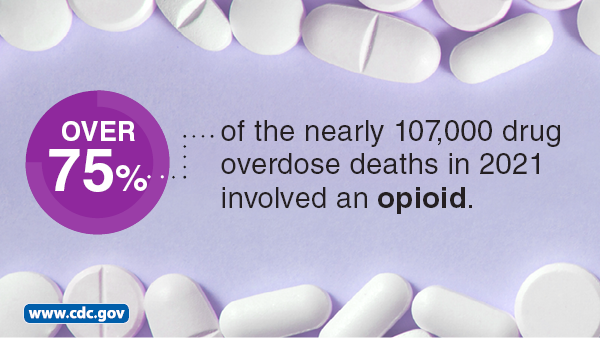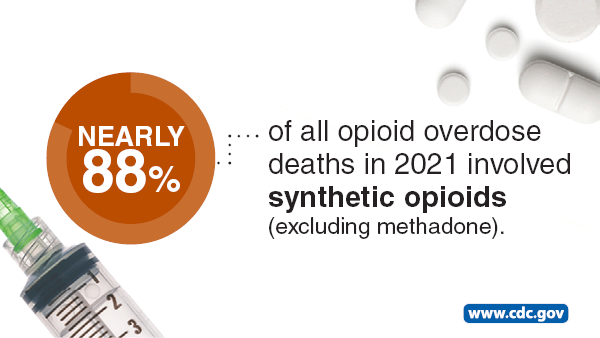Opioid Basics
Opioids are a class of drugs used to reduce pain.
Prescription opioids can be prescribed by doctors to treat moderate to severe pain but can also have serious risks and side effects.
Common types are oxycodone (OxyContin), hydrocodone (Vicodin), morphine, and methadone.

The number of drug overdose deaths remain high, and the majority of these deaths, over 75% in 2021, involved opioids3.

Find definitions for acute pain, chronic pain, addiction, tolerance, and other commonly used terms in the opioid overdose epidemic.
- Algren D, Monteilh C, Rubin C, et al. Fentanyl-associated fatalities among illicit drug users in Wayne County, Michigan (July 2005-May 2006). Journal Of Medical Toxicology: Official Journal of the American College Of Medical Toxicology [serial online]. March 2013; 9(1):106-115.
- Wide-ranging online data for epidemiologic research (WONDER). Atlanta, GA: CDC, National Center for Health Statistics; 2022. Available at http://wonder.cdc.gov.
- Hedegaard H, Miniño AM, Spencer MR, Warner M. Drug Overdose Deaths in the United States, 1999–2020. National Center for Health Statistics [PDF], December 2021.
- Spencer MR, Miniño AM, Warner M. Drug overdose deaths in the United States, 2001–2021. NCHS Data Brief, no 457. Hyattsville, MD: National Center for Health Statistics. 2022. DOI: https://dx.doi.org/10.15620/cdc:122556
